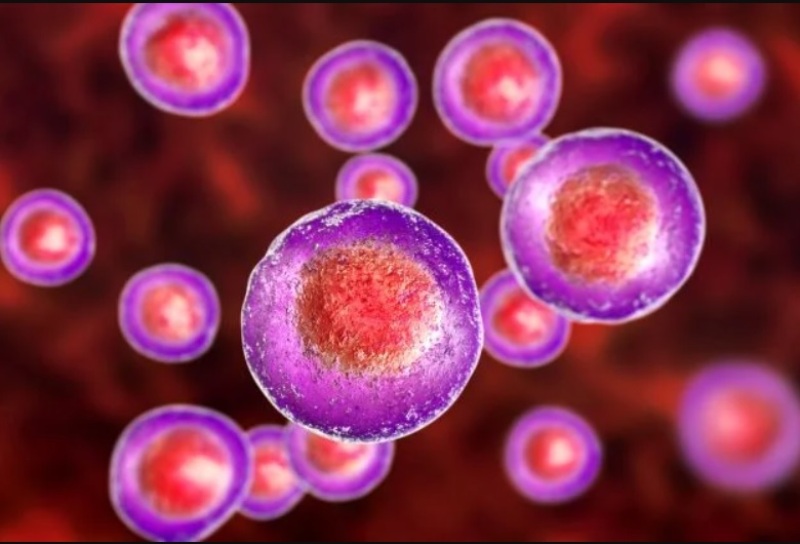
The cell lysis and disruption market is expected to grow at a CAGR of 10.3% during the forecast period of 2025 to 2033, driven by increasing demand in biotechnology research, technological advancements, and growing applications in drug discovery and development. Standardization and reproducibility present challenges that need to be addressed for the market to reach its full potential. The segmentation by technique highlights the dominance of reagent-based methods, while physical disruption methods exhibit the highest expected CAGR. The market dynamics for products indicate a shift towards increased reliance on reagents & consumables. Geographically, North America leads in 2024, with Asia-Pacific expected to surpass in CAGR. The competitive landscape showcases key players adopting strategic approaches, with Thermo Fisher Scientific, QIAGEN, and Bio-Rad Laboratories at the forefront. As the industry progresses from 2025 to 2033, the cell lysis and disruption market is poised for continued growth, playing a crucial role in advancing biotechnological and pharmaceutical research globally.
Increasing Demand in Biotechnology Research
The rising demand for cell lysis and disruption is primarily fueled by the growth in biotechnology research. Companies like Thermo Fisher Scientific and Merck KGaA are witnessing increased adoption of their cell lysis products in laboratories and research facilities. Researchers are utilizing cell lysis techniques to extract proteins, DNA, and other cellular components for various biotechnological applications. This is evident in the expanding market presence and revenue growth of key players, emphasizing the crucial role of cell lysis in advancing biotechnological discoveries.
Technological Advancements in Cell Disruption
Technological advancements play a pivotal role in driving the cell lysis and disruption market. Companies such as QIAGEN and Becton, Dickinson, and Company are investing in the development of innovative cell disruption techniques. The introduction of advanced instruments and reagents that ensure efficient cell disruption has contributed to the market's growth. For instance, QIAGEN's TissueRuptor technology enables fast and effective disruption of various sample types, catering to the evolving needs of the research community.

Growing Applications in Drug Discovery and Development
The cell lysis and disruption market is experiencing significant growth due to the expanding applications in drug discovery and development. Key players like Bio-Rad Laboratories and MiltenyiBiotec are witnessing increased demand for their products in pharmaceutical research. Cell lysis techniques are crucial in isolating specific cellular components for drug target identification and validation. The market's expansion is evident in the collaborations between these companies and pharmaceutical organizations, highlighting the essential role of cell lysis in advancing drug discovery processes.
Challenges in Standardization and Reproducibility
While the cell lysis and disruption market is driven by numerous factors, challenges related to standardization and reproducibility present a significant restraint. Companies such as BioVision and F. Hoffmann-La Roche AG face obstacles in achieving consistent results across different sample types and conditions. Standardizing cell lysis protocols and ensuring reproducibility is critical for researchers, and the lack of universally accepted standards hinders the widespread adoption of cell lysis techniques. Overcoming these challenges is essential to unlocking the full potential of cell lysis in various research applications.
Market Analysis by Technique: Reagent-based Techniques Dominate the Market
The market segmentation by technique includes reagent-based and physical disruption methods. In 2024, reagent-based techniques dominated the market, contributing significantly to revenue. The forecast for 2025 to 2033 indicates sustained dominance by reagent-based methods, driven by their versatility and application across various sample types. However, physical disruption methods, such as mechanical homogenization, are expected to exhibit the highest CAGR during the forecast period, highlighting the increasing demand for efficient mechanical cell disruption techniques.
Market Analysis by Product: Instruments Segment Dominate the Market
The market segmentation by product includes instruments and reagents & consumables. In 2024, instruments generated the highest revenue, driven by the demand for advanced cell disruption technologies. However, during the forecast period from 2025 to 2033, reagents & consumables are expected to exhibit the highest CAGR, emphasizing the ongoing need for high-quality reagents and consumables in cell lysis processes. The market dynamics indicate a shift towards increased reliance on consumables for routine cell lysis applications.
North America Remains the Global Leader
The cell lysis and disruption market exhibits diverse geographic trends. In 2024, North America led in terms of both highest revenue and CAGR, driven by the robust presence of biotechnology and pharmaceutical research facilities. However, Asia-Pacific is expected to surpass North America in terms of CAGR during the forecast period, indicating the region's growing importance in the cell lysis market. Europe is anticipated to maintain a substantial market share, with the Middle East and Africa showcasing a rising interest in advanced cell lysis techniques.
Market Competition to Intensify during the Forecast Period
The competitive landscape of the cell lysis and disruption market is characterized by key players such as Thermo Fisher Scientific, Merck KGaA, QIAGEN, Becton, Dickinson and Company, Bio-Rad Laboratories, MiltenyiBiotec, BioVision, and F. Hoffmann-La Roche AG. These companies have strategically positioned themselves by focusing on technological innovation, collaborations with research institutions, and expanding their product portfolios. In 2024, Thermo Fisher Scientific reported significant revenue, leveraging its broad range of cell lysis products. QIAGEN excelled in technological advancements, while Bio-Rad Laboratories demonstrated leadership in providing instruments for efficient cell disruption. The key strategies of these players involve continuous research and development, addressing the evolving needs of researchers, and expanding their global footprint.
Historical & Forecast Period
This study report represents analysis of each segment from 2023 to 2033 considering 2024 as the base year. Compounded Annual Growth Rate (CAGR) for each of the respective segments estimated for the forecast period of 2025 to 2033.
The current report comprises of quantitative market estimations for each micro market for every geographical region and qualitative market analysis such as micro and macro environment analysis, market trends, competitive intelligence, segment analysis, porters five force model, top winning strategies, top investment markets, emerging trends and technological analysis, case studies, strategic conclusions and recommendations and other key market insights.
Research Methodology
The complete research study was conducted in three phases, namely: secondary research, primary research, and expert panel review. key data point that enables the estimation of Cell Lysis And Disruption market are as follows:
Market forecast was performed through proprietary software that analyzes various qualitative and quantitative factors. Growth rate and CAGR were estimated through intensive secondary and primary research. Data triangulation across various data points provides accuracy across various analyzed market segments in the report. Application of both top down and bottom-up approach for validation of market estimation assures logical, methodical and mathematical consistency of the quantitative data.
| ATTRIBUTE | DETAILS |
|---|---|
| Research Period | 2023-2033 |
| Base Year | 2024 |
| Forecast Period | 2025-2033 |
| Historical Year | 2023 |
| Unit | USD Million |
| Segmentation | |
Technique
| |
Product
| |
Cell Type
| |
Application
| |
End-Use
| |
|
Region Segment (2023-2033; US$ Million)
|
Key questions answered in this report